KANSAS is home to two main species of prairie-chickens, lesser prairie-chickens (Tympanuchus pallidicinctus) and greater prairie-chickens (Tympanuchus cupido), and some hybrids thrown in. The differences are subtle but easy to spot once you know what to look for. Recently, I accompanied my photography buddy and grouse expert, Noppadol Paothong, on a trip to Kansas to research lek locations (also known as booming grounds) for his future photography workshops.
The first stop was in western Kansas, where we met up with Stacy Hoeme. Stacy, a generous, easy-going, positive-attitude rancher, is an example of the modern cutting-edge farmer/rancher who has recognized the benefits of a strong land ethic. Stacy and his son Chasten approach land management with strategies that exceed those suggested by state and federal conservation programs. Their use of limited tillage and crop rotation has resulted in their pastures supporting some of the lesser prairie-chicken’s largest known populations and densities. For their efforts, the Hoemes were awarded the prestigious Leopold Award in 2018.
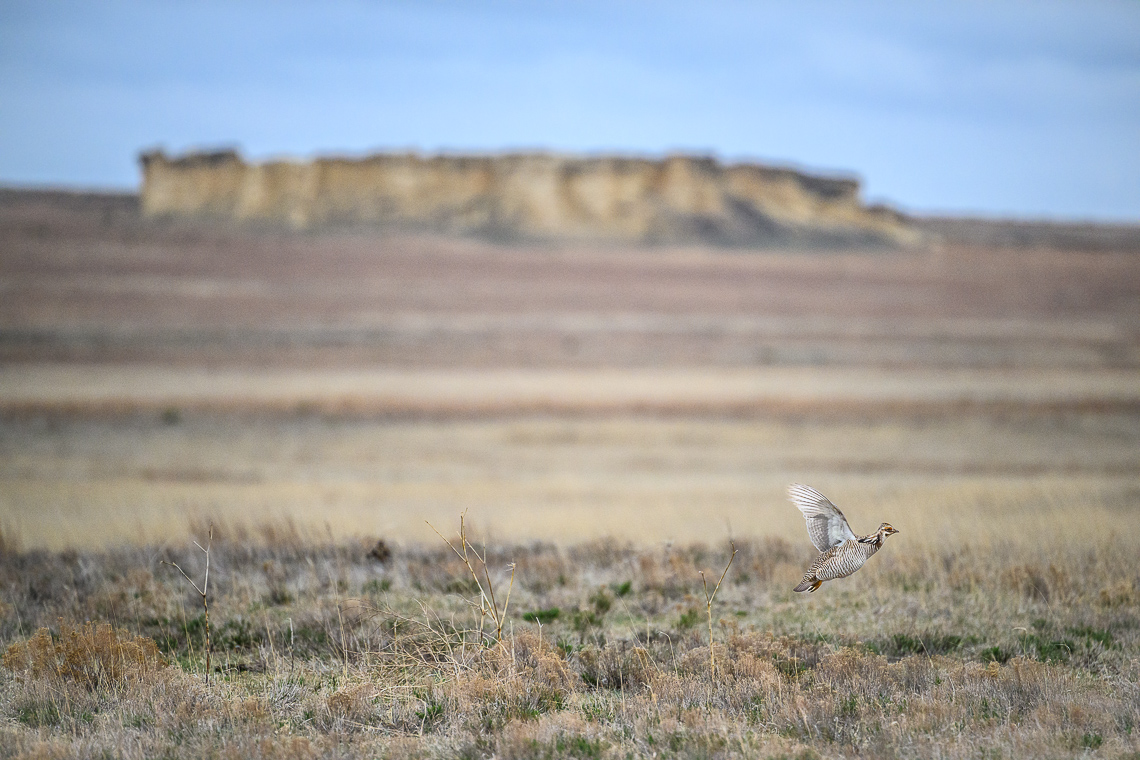

The evening sky on the first night with its encroaching ominous skies, foretold the upcoming dramatic storms that would come the following day. Much of the next day was a literal washout. While the rain put a damper on shooting, ranchers like Stacy welcomed the much-needed rain. Until this rain, the soil there had been seriously parched. I witnessed the effects of the drought a few weeks earlier when I drove back from Wyoming and my Columbian sharp-tailed grouse trip. Highway traffic along I-70 had to significantly drop speed due to the blowing dust and soil that eveloped the highway like a thick fog. It reminded me of the dust bowl photos from the 1930s.
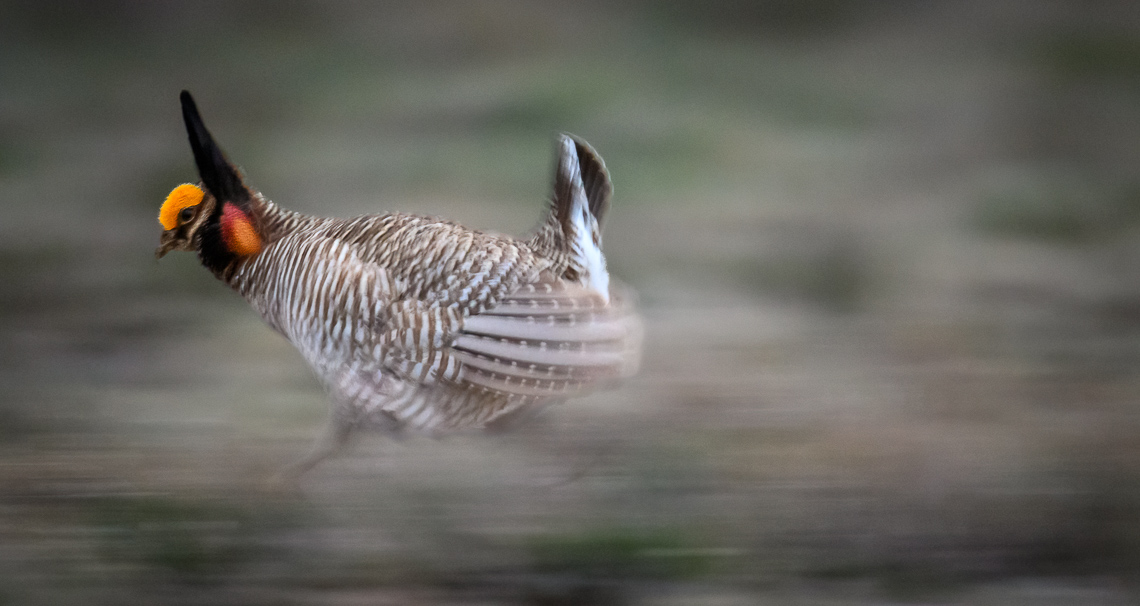
Like other lekking birds (including greater sage-grouse, sharp-tailed grouse, and prairie chickens), lesser prairie chickens gather at spots known as leks (aka booming ground) to mate. Males perform a mating dance to entice females to mate. As part of that ritual, males also will fight for the best position on the lek. Males will fiercely protect their position. In the above photo, a lesser prairie chicken rushes to chase an intruding lesser prairie chicken out of its space. The photo also shows one of the ways to identify the difference between the lesser prairie chicken and the greater prairie-chicken. Note the size of the eye comb. Later, in this blog posting, you will see that the eye comb of the greater prairie chicken is smaller. Another difference is that the air sack of the lesser prairie chicken is redder, with the greater prairie-chicken being more orange-like.
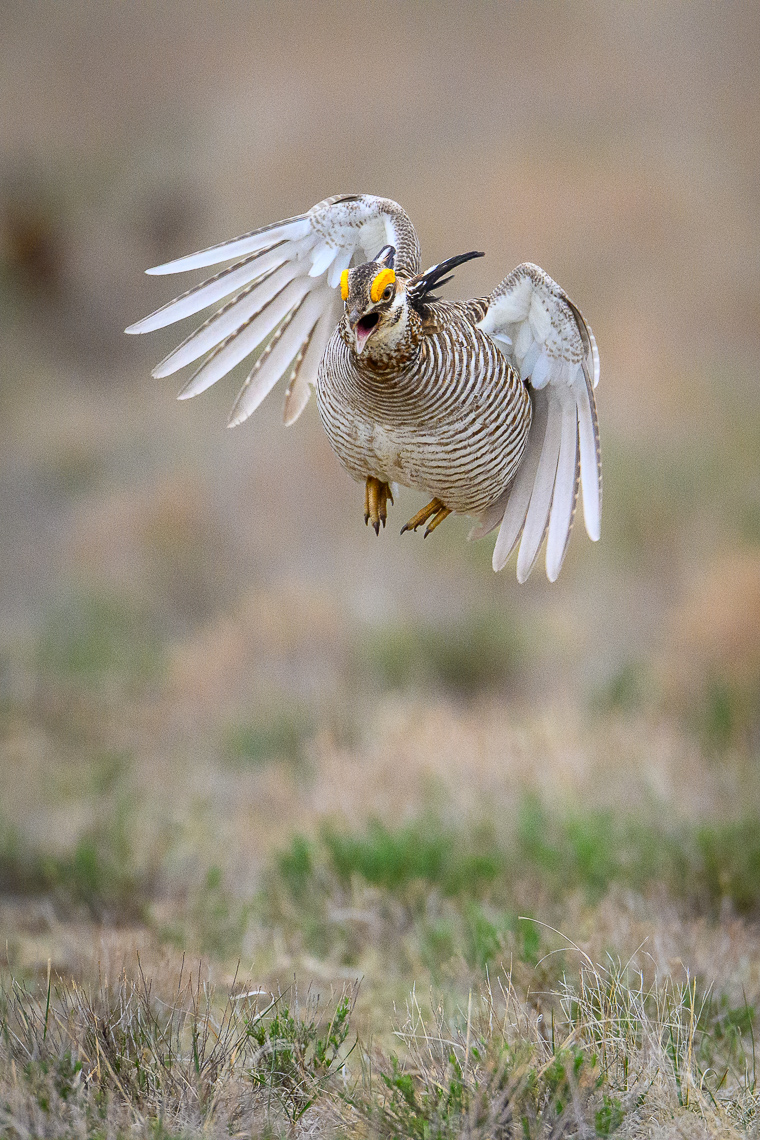
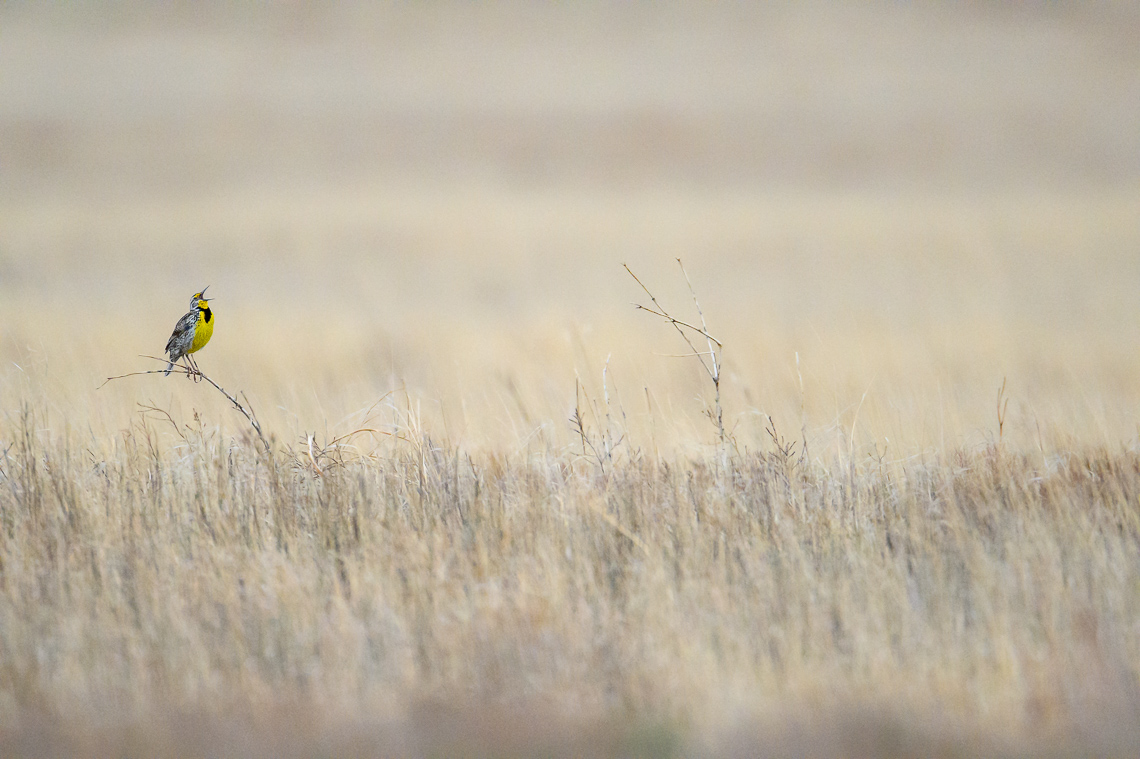
One of my favorite things about hanging out on the prairie is listening to the uplifting flute-like vocalization of meadowlarks. In this case, it was a western meadowlark that I was hearing. A colorful member of the blackbird family, the western meadowlark (Sturnella neglecta) uses a feeding method that relies on strong muscles that open its bill very wide. They can insert their bill into soil, bark, etc., and then force their bill open to making a larger hole. This ability gives them an advantage over other birds to reach insects that most other birds can’t.
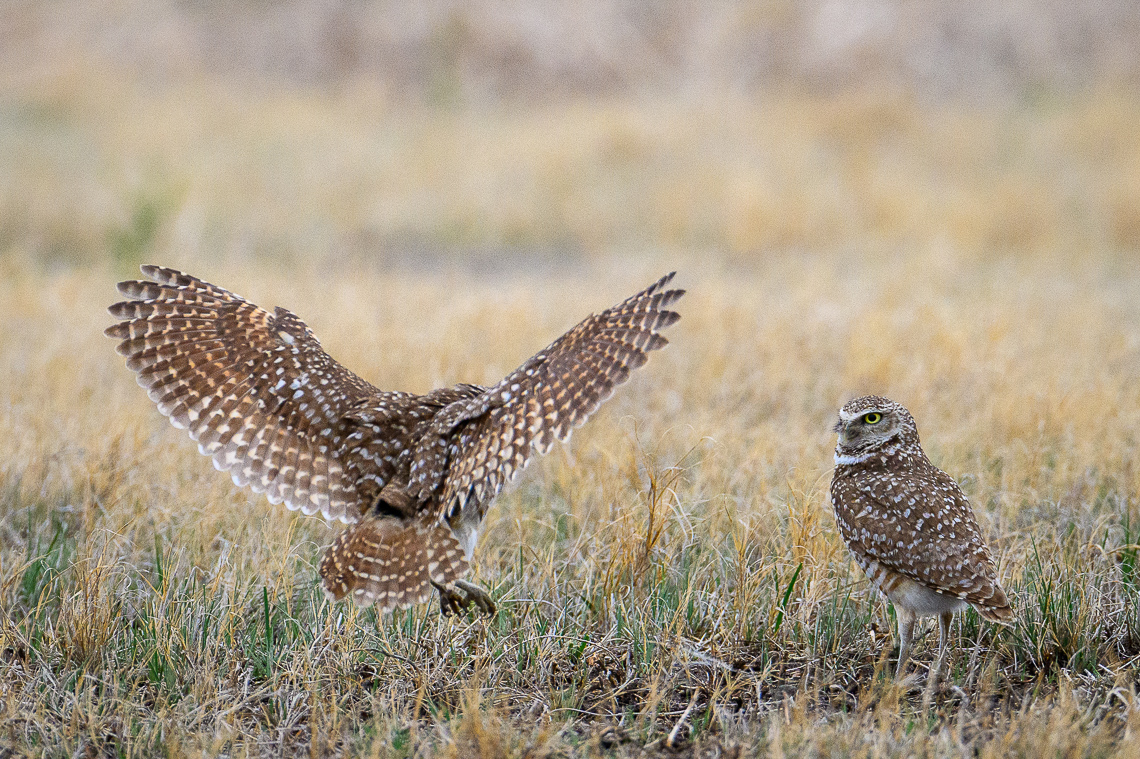
Another bonus from the trip to the Hoeme Ranch was the opportunity to observe burrowing owls (Athene cunicularia). In the above photo, a burrowing owl lands next to another burrowing owl at the opening of an underground burrow. Burrowing owls live in underground tunnels, often that they have taken over from prairie dogs, tortoises, and ground squirrels. While most owls are active at night, borrowing owls are active during the day, doing most of their hunting in the early morning or early evening. When threatened by a predator, the burrowing owl will retreat to the borrow and produce hissing and rattling sounds similar to that of a rattlesnake. Burrowing owls are often seen with just their eyes poking above the burrow hole. Control programs to limit or eradicate prairie dogs and ground squirrels have led to a sharp decline of burrowing owls who depend on the burrows dug by prairie doge and ground squirrels.
Male greater prairie-chickens boom and dance to impress the girls
From western Kansas, we headed east to a greater prairie-chicken lek near Tipton in north-central Kansas. Before we arrived, a friend of Noppadol’s was able to triangulate a booming ground location using sound monitoring equipment, so we had a good idea of where to look.
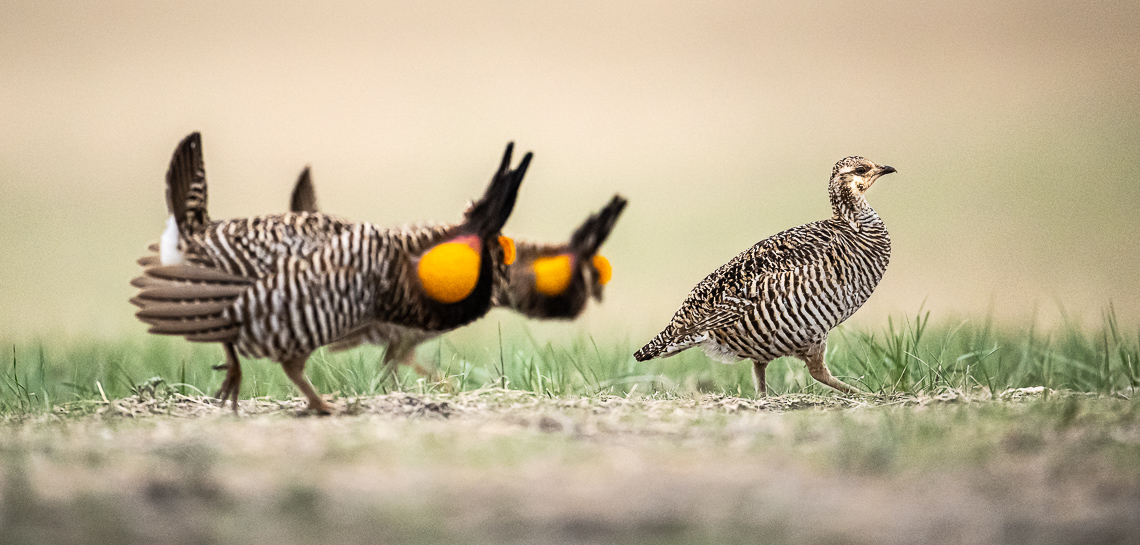
While rain and a late season visit to the lesser prairie-chicken lek didn’t afford much activity, there was plenty of action at the greater prairie-chicken lek, notably when a female showed up. It was somewhat comical to see the female strut across the various territories of the males on the lek. It looked like she was shopping for a boyfriend. During her ‘shopping trip,’ male greater prairie-chickens would perform their mating dance. This display includes extending their orange eye combs, lowering the head, raising two tufts of feathers on the neck, and pointing the tail slightly forward while stamping their feet rapidly. They also expand their bright orange air sac. In the end, though, she ignored all the efforts of the males with a cold shoulder. Guess she didn’t care for what she saw.
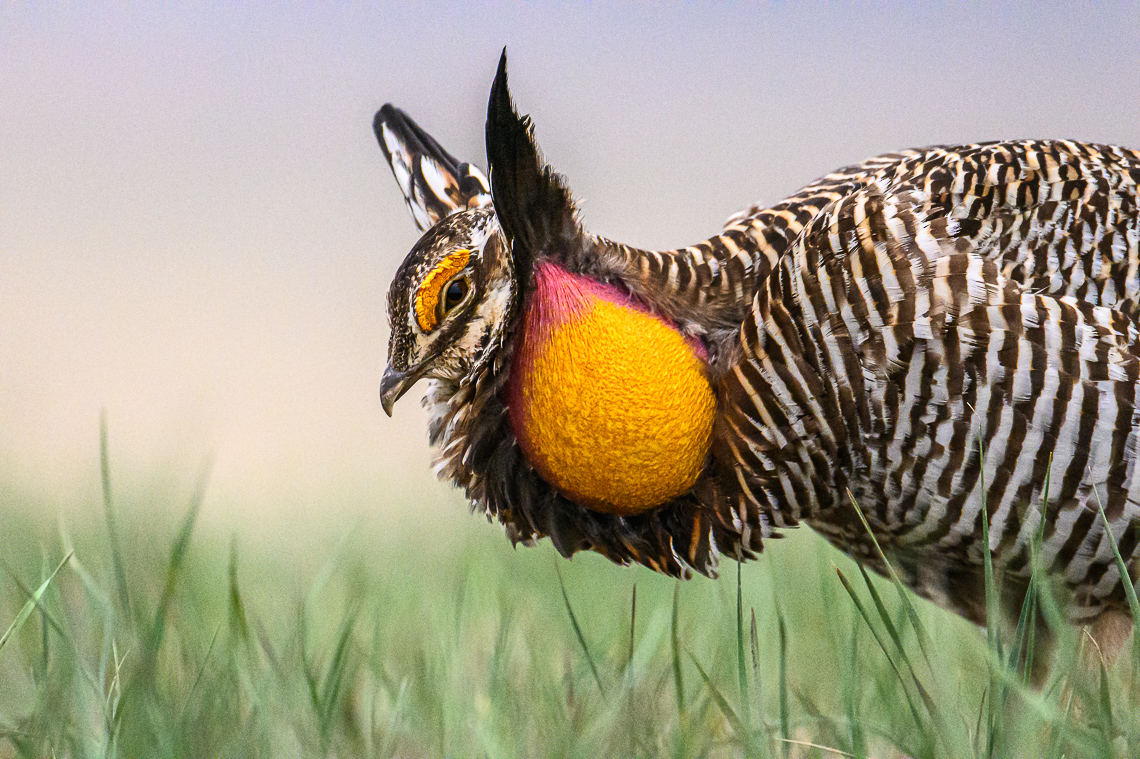
Battling to protect lek position
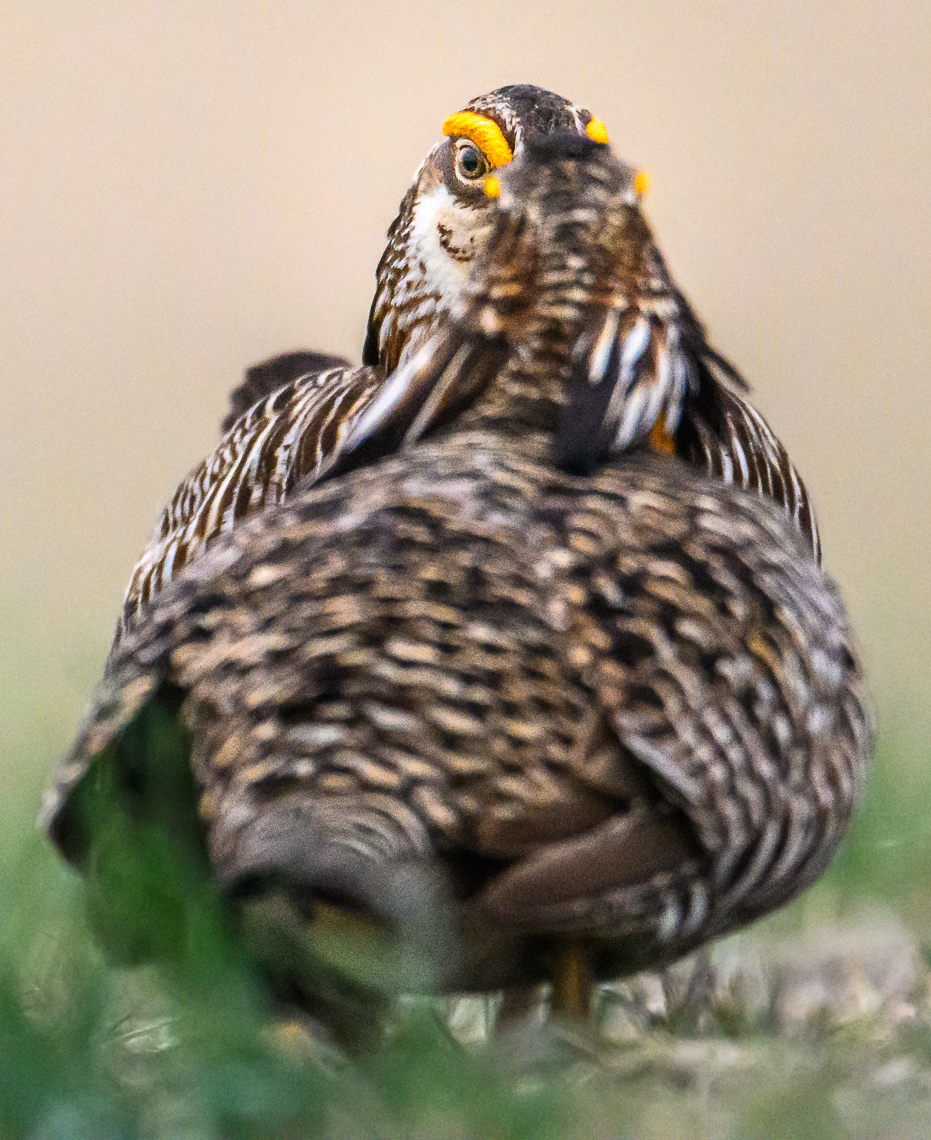
Staredown face-offs are the first stage of the battle to protect or overtake a position on the lek. It is always interesting to see who makes the first move. When one does, all hell erupts with some serious biting and pulling of feathers occurring. Feathers fly everywhere, much like in an animated cartoon.
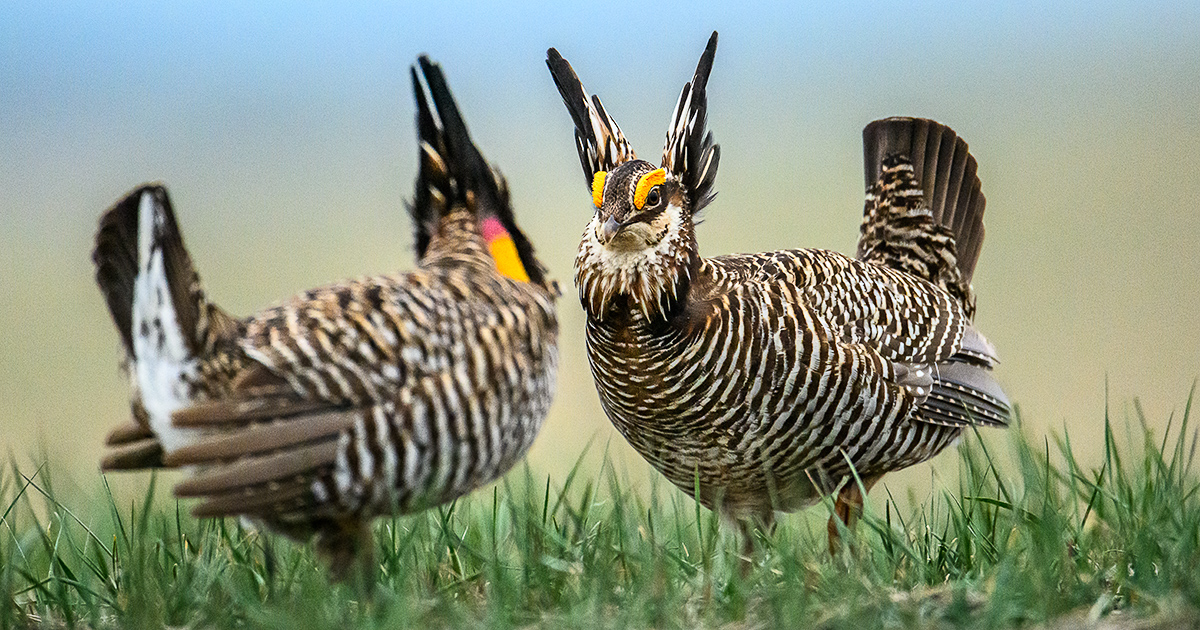
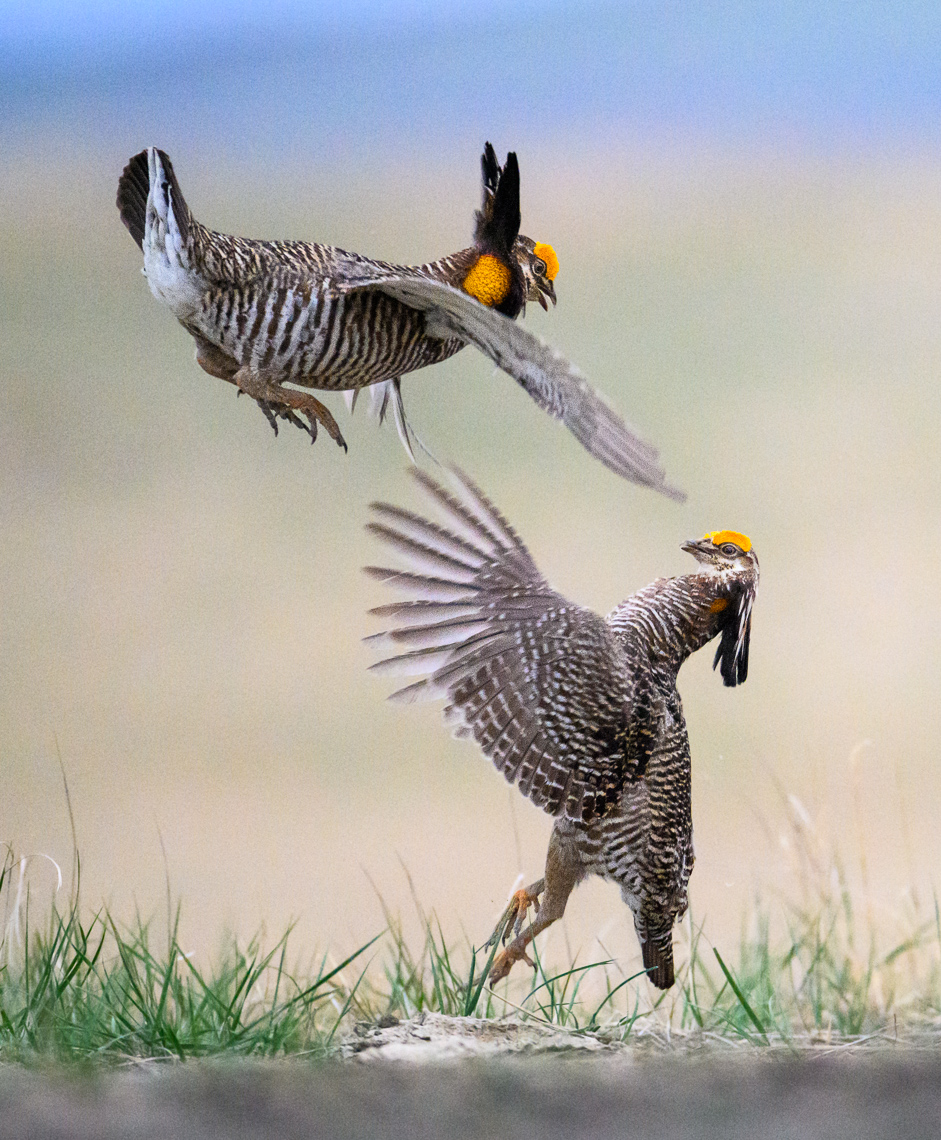
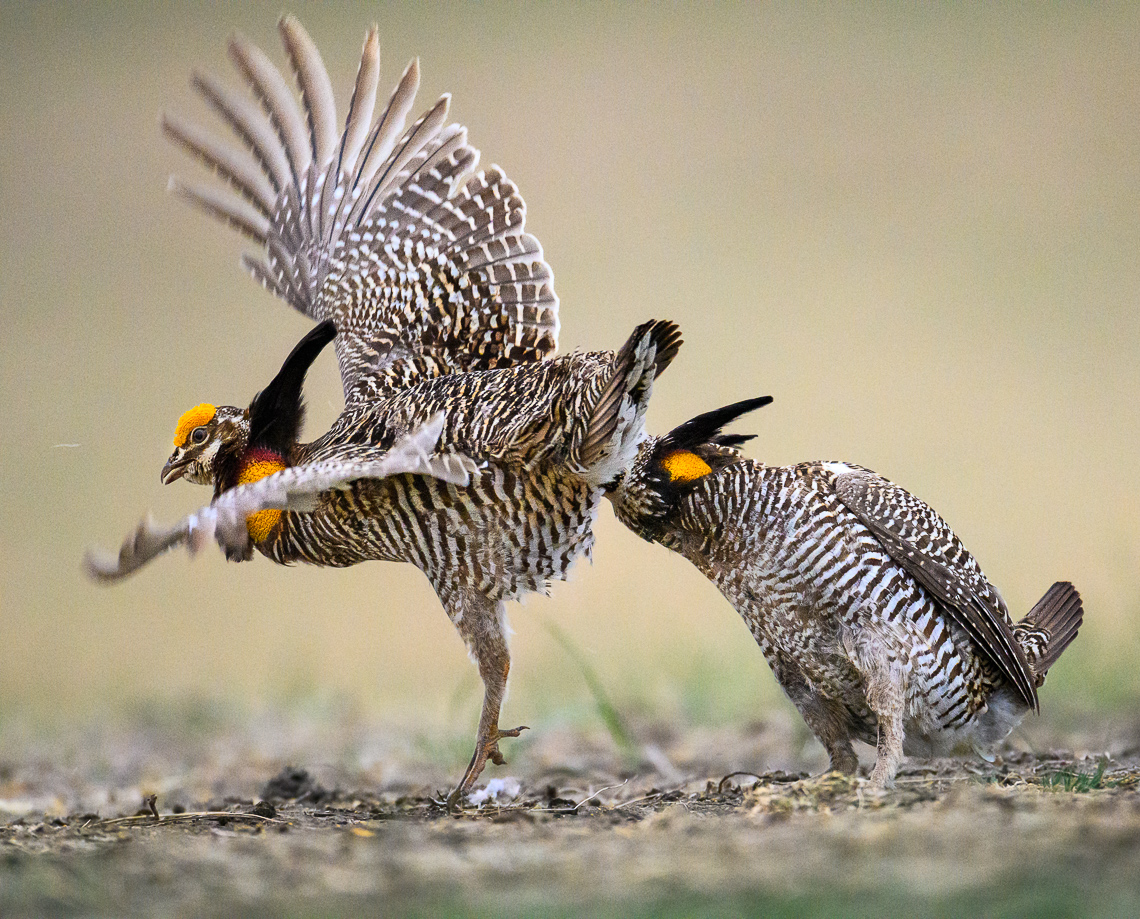
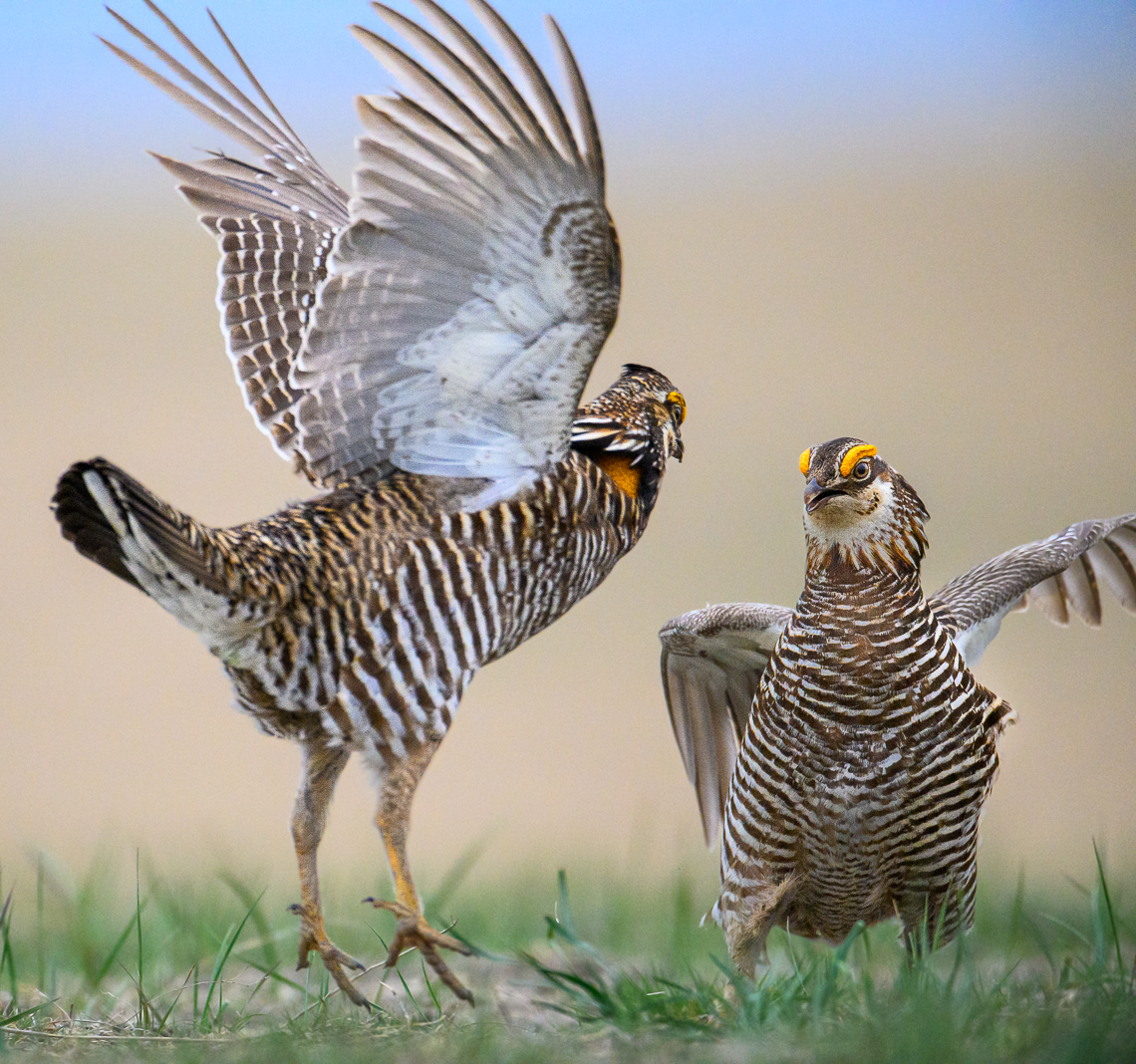
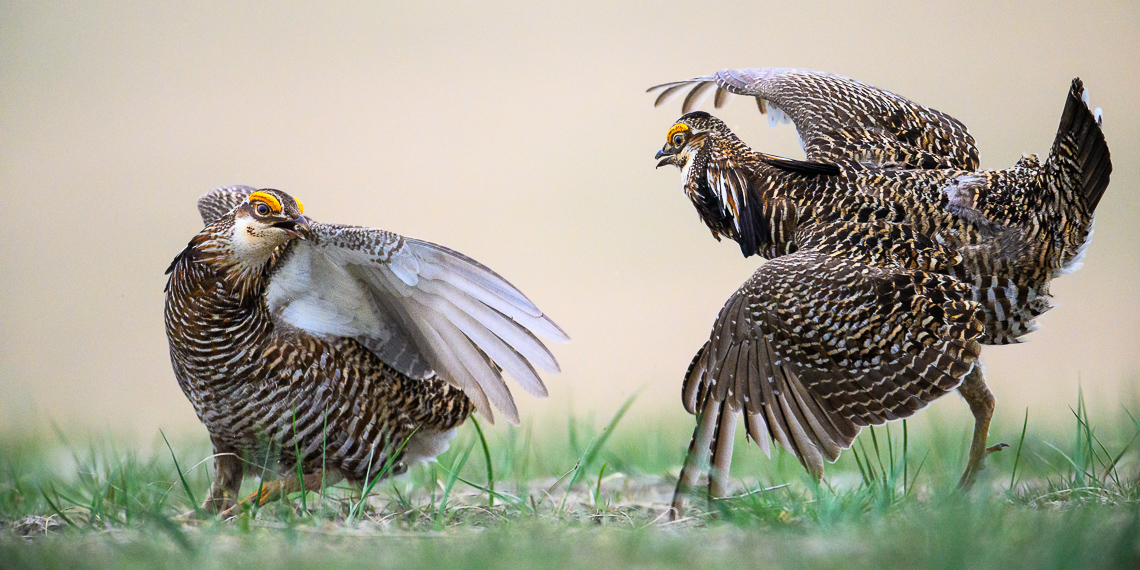
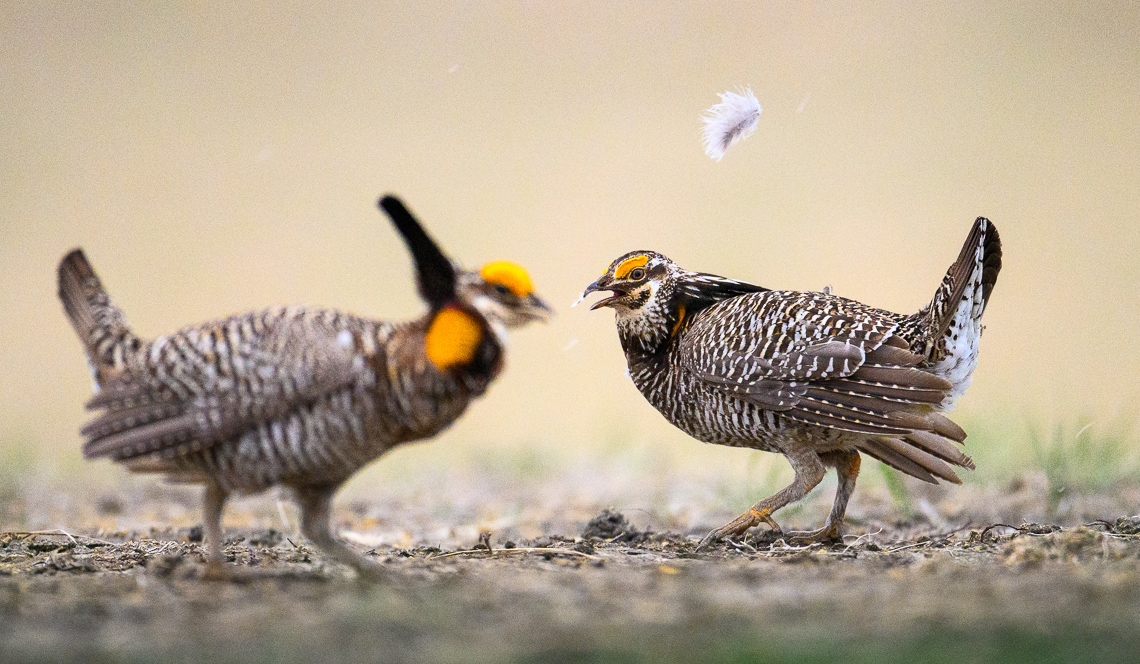
While these battles are dramatic, there are more significant dangers to greater prairie-chickens and lesser prairie-chickens. All prairie-chickens are threatened by climate change (drought or too much rain) and habitat loss. In particular, habitat loss caused by wind energy development. Prairie-chickens need large expanses of open grassland without tall objects (like wind turbines or power lines and power poles) that provide a raptor to perch on.
PHOTO GALLERY of all my greater prairie-chicken photos
PHOTO GALLERY of all my lesser prairie-chicken photos
PHOTO GALLERY of all my burrowing owl photos
Be the first to know ‘Follow’ Dengler Images on Instagram @DenglerImages or follow my Twitter feed to know when I post iPhone reports from the field.